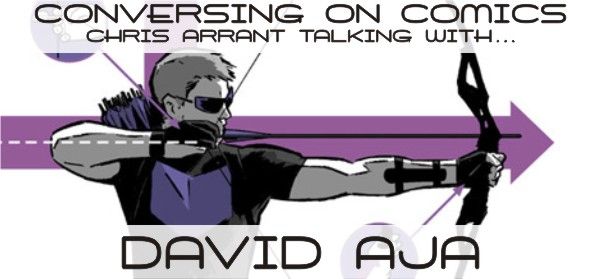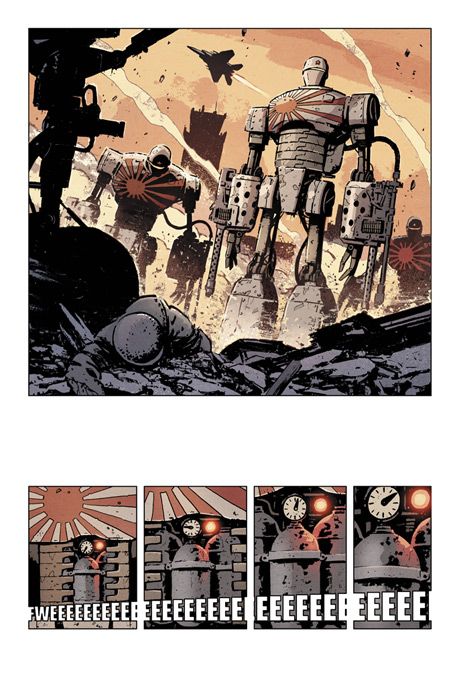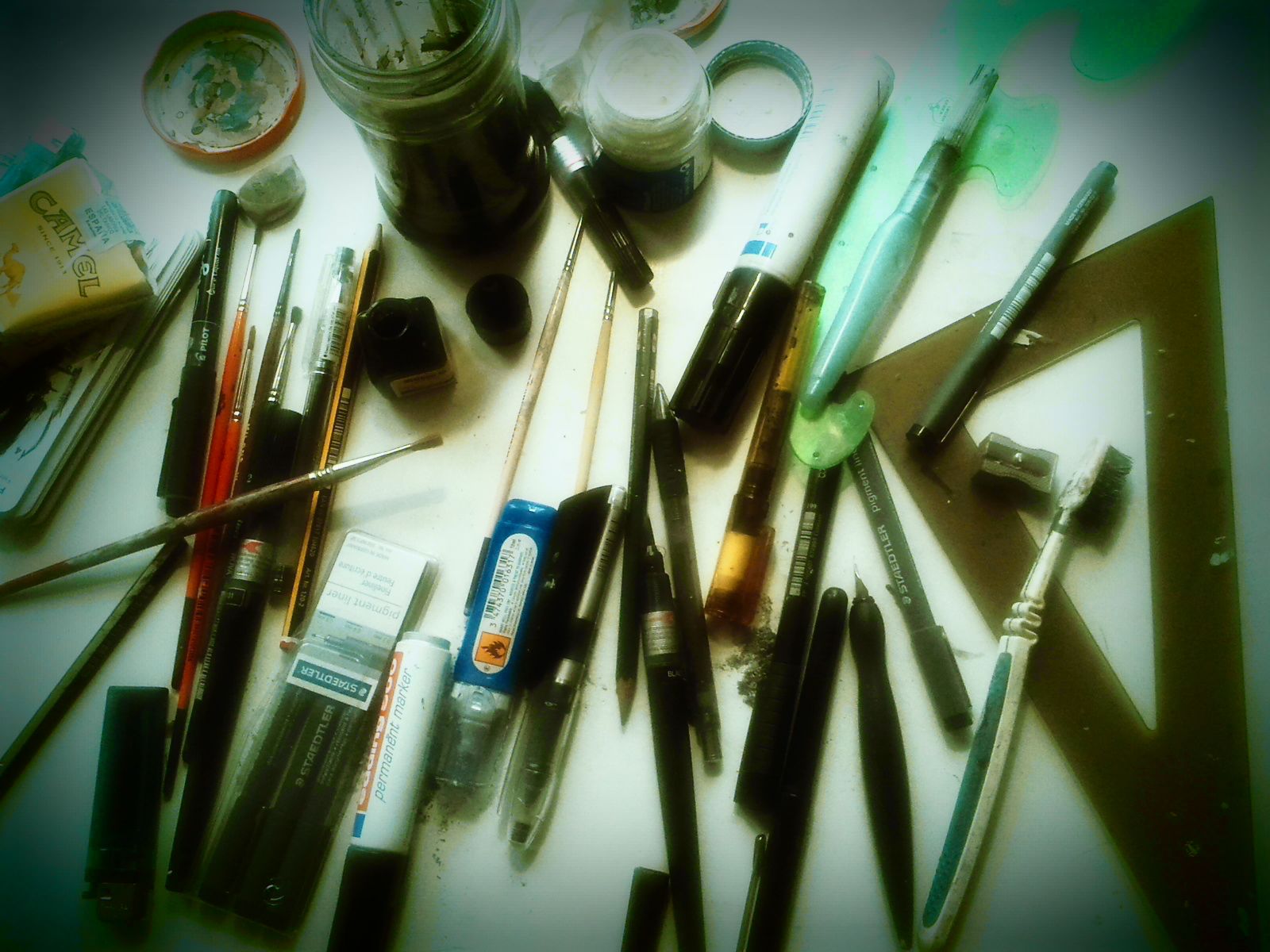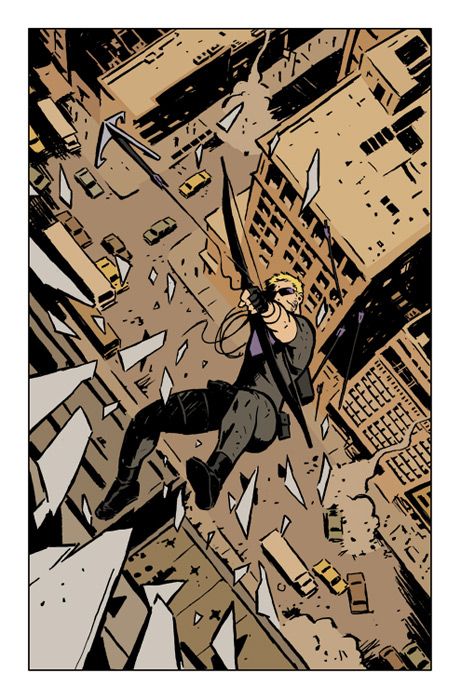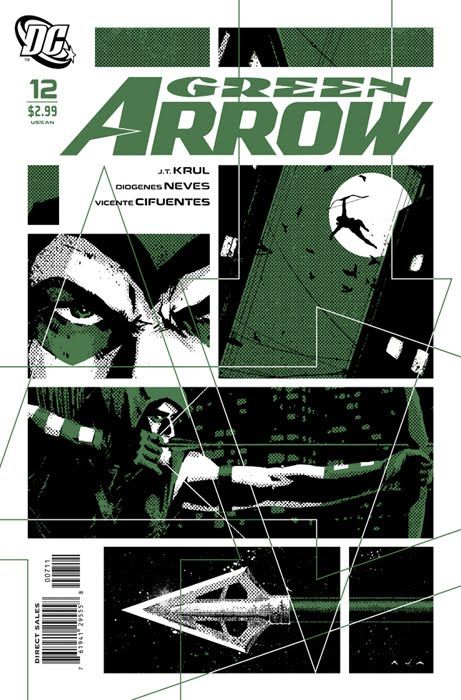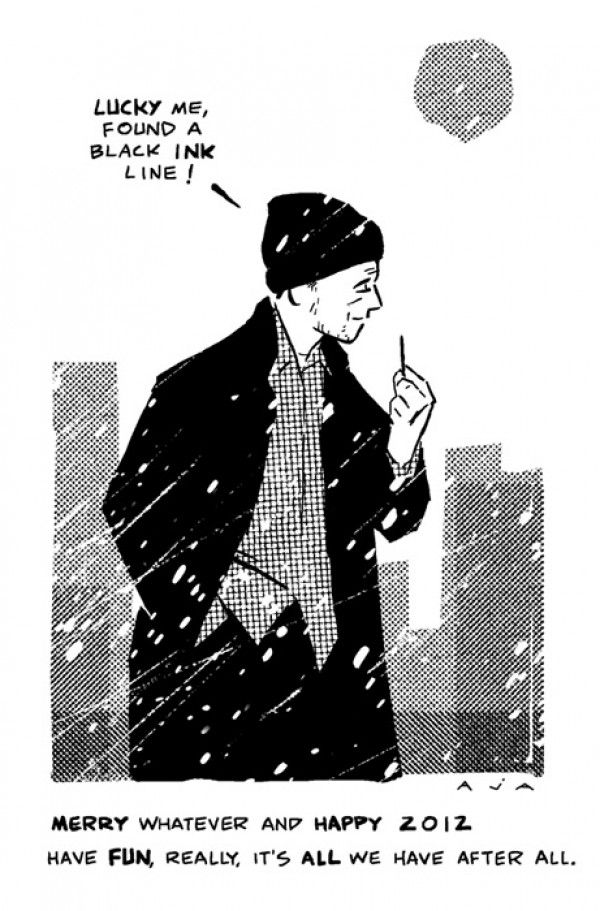Rough around the edges but as precise as a Swiss clock. It's an apt description for the Marvel character Hawkeye, and also the work of series artist David Aja.
Born and raised in Valladolid, Spain, the same town Don Quixote author Miguel de Cervantes called home, Aja earned a college degree in illustration as was on his way to a career in magazine illustration before he followed his childhood ambition: comics. After a prosaic debut in the Marvel anthology X-Men Unlimited, Aja grew by leaps and bounds before becoming the signature artist of the cult-hit series The Immortal Iron Fist with writers Ed Brubaker and Matt Fraction. After the conclusion of his run, Aja did a series of one-off stories for titles like Secret Avengers, Daredevil and Wolverine: Debt of Death while he and his wife added two children to their home already filled with animals. This year, Aja and Fraction reunited for another series, this time taking on classic Avenger (and newly minted movie star) Hawkeye in a self-titled series that focuses on the archer's life when he's not working as one of Earth's Mightiest Heroes.
After last week's stupendous one-off story in Hawkeye #6, Aja seems on top of his game. And what better time to get inside his head and find out what he thinks about comics and his place in it. In our conversation, we go over his time on The Immortal Iron Fist and Hawkeye, his views on original art, and also his idea of creative teams and what his formula is for making a great comic.
Chris Arrant: First off, what are you working on today?
David Aja: I'm working on Hawkeye #8 and #9 at the moment. They are connected, and I need to work on stories as a whole. I never have been able to work page by page. Usually, when I do the first page of an issue, I like to know how the last page is going to be. I'm quite sick with all narrative across issues being equilibrious and symmetrical. For example, this answer is a palindrome. No, not really. [laughs]
Do you do any of your illustration work digitally, or is it all with pencil, pen and brush?
I used to sketch on computer then print it out on boards and ink it, but right now with Hawkeye I'm doing almost everything digitally.
What do you use to ink?
Almost everything I have around. I’ll send you a picture I did while inking Wolverine: Debt of Death.
Although you did work before Immortal Iron Fist, it's that work from 2006 to 2008 that really made your name in American comics. What was that experience like overall looking back on it?
Great, of course. I learned a lot. When doing a monthly you have to work hard; you produce a lot and you have to find storytelling tricks and things to save time, So yeah, you learn something new every day.I worked as an illustrator before where I did everything by my own, so with Immortal Iron Fist I learned working on a team, and what a team: Ed, Matt, Matt, Warren, Alejandro ... we really had a great time there.
You started doing comics in 2005. When did you feel you had finally adjusted to the job and felt comfortable doing comics regularly?
Never! [laughs] The way I see it, this is a job. You have to try to improve and learn something new every single day
Between Immortal Immortal Iron Fist and Hawkeye you did a number of covers, one-off issues and shorts for Marvel but never latched onto anything major until four years later with Hawkeye. Was there a reason you avoided doing a long-term project between these two major projects?
The main reason was because I had two kids. [laughs]
They are 4 and 2 now. And yeah, I've been working, too, but when not doing a monthly the media impact and coverage on a creator’s work isn’t as high, and these smaller things tend to get a little lost here and there.
Jumping into Hawkeye, you and Matt Fraction are really exploring a new side of Clint Barton -- a street-level hero in a new kind of way. What's the working relationship like between you and Matt?
It's called love, I think. I love Matt. We’ve been working very closely since the very beginning, so much so that there’s been a point where I don’t know where some of our ideas come from first – him or I.
We talk a lot (too much, maybe), but I think a comic should be a whole piece of work, not strict divisions with the script on one side and the art on the other. So you really need to have one author doing the script and the art, or multiple creators talking. That’s the way I see it.
Basically the way things work for Hawkeye is that Matt works up a rough plot that he conveys to me, then and I sketch and think out the ideas visually. Matt and I then talk about them and also with our editors Steve Wacker and Sana Amanat. After that I do thumbnails for the whole issue (which I used to call "little shits," the infamous little shits). Matt does the dialogue based on those thumbnails, then I finish the pages and Matt tightens up the dialogue at the very end.
Also, I have to say here how great it is working with our colorist Matt Hollingsworth, too. He is a lovely bloke, and we work very very closely. We worked together closely on Immortal Iron Fist, and that continues here with Hawkeye. The same goes for Chris Eliopoulous, our letterer.
They go through a lot every month, having to withstand my hundreds of neurotic notes and corrections. And of course Steve and Sana do as well. I know this is starting to look like a “Thank You” note, but really… I know I’m sometimes a little sick with minor details. [laughs]
But thinking about the why I work, I know it’s time-consuming … but I feel like it deserves that. It’s so great to be proud of the stuff you’re putting out there. It’ll never be perfect of course, though. If it was, what would be the incentive of doing another issue? [laughs]
One last note about working as a creative team on something like Hawkeye. Usually there are stressful situations with deadlines and stuff, so I think the most important thing is to always to have fun together and never bring bad vibrations but good ones.
I noticed on your website that you don't sell your original art and don't accept commissions. Is it that you just don't do it on your website, or do you not sell your original art at all -- online, through a dealer or at conventions?
Nope, I don’t do any sales at all. Maybe in the future, but not now. People call it “original art,” but for me it’s just part of the process for the final art. The same way sketches and the scripts are preliminary works building up to something, I feel like the final form is the comic itself with the colors, balloons, ads between pages and that snot on the back cover edge. [laughs]
The printed edition is the people’s art. With comics, a lot of people can get art for a cheap price instead of just one person getting the “original art” for a higher price. Not to talk about the added value and all that. Look, I spent five years getting a college degree in Fine Art, and one of the things I learned there is that I do not want to be a part of the art market. [laughs]
So if you don't sell your original art, what do you do with it once you've scanned it into the computer?
They are my precious. [laughs] I have them all in a wardrobe closet in my studio. I love to do art exhibitions, but not for selling them; I do them to showcase that part of the process of creating comics. I have only done a couple of exhibitions, though.
You've almost exclusively done work at Marvel since 2005; I say "almost" because you've done some small but potent cover and design work for Valiant and a teasingly great single piece for DC on a Green Arrow cover. First off, why is most of your work at Marvel? Is it the editors, the characters, the pay, or just happenstance?
To be completely truthful, it’s just happenstance and the people involved. I have never had an exclusive contract with Marvel, but I’ve felt so comfortable working there with writers like Ed, Matt, David Lapham and Ann Nocenti, along with editors like Steve, Warren Simons and Alejandro Arbona and so on. At Marvel I have been able to choose the projects I work on and do it with amazing people, so what else could I hope for?
You say that creators and editors play a big part in what projects you do. But characters -- are there certain characters you are drawn to, or certain types? Are there characters you haven't worked on that you'd like to work on, perhaps as a guest star in Hawkeye or somewhere else?
Well, yeah, obviously characters have something to do with me working where I do. As for example, I’ve loved Clint Barton since I was a little kid. And for me, it is important to feel comfortable with the characters I’m drawing, but I cannot think of any other character I would like to work with now besides Hawkeye.
You haven't done any interior work for a publisher outside Marvel, except for your work in Spain. Could you ever see yourself doing work for DC, Valiant or perhaps endeavoring on creator-owned work?
Sure, of course … and I will. Especially creator-owned work. I have been in talks for years about that with lots of writers about creator-owned projects, but for now they are just that: projects. It’s all about time, Chris. I need more time, time, time.
Chris, do you have some time there? I have money! [laughs]
I'm in the same boat as you -- just a lot less beautifully illustrated. Some people might expect you to be fresh out of school when you debuted at Marvel in 2005, but you actually had a career as an artist and a professor for a decade before making your debut in American comics in 2005. Can you tell us of your professional life during this time?
I wasn’t really a professor or a comic artist then, I was an illustrator. I finished university in 2000 and started working as an illustrator. I worked for newspapers, magazines, book covers, children’s books and ads … everything, I think. [laughs]
I gave some talks and lectures at universities, but just as an professional illustrator. That was my main occupation all those years.
All the same, I'm immensely intrigued by your Spanish illustration work, both prior to your 2005 Marvel debut but also the work you've done since then. Have you put any thought into re-releasing those books or collect those illustrations for the English-speaking world at some point?
I did some children’s books in Spain and on some of them I used panels on illustration, but no actual comics work then. I used to do that a lot in newspapers and magazines; instead of doing a single illustration, I divided it into panels and sometimes even added balloons. But they were illustrations, not comics. So why did I do it? Because I love comics!
Although it’s not comics, could we possibly see you re-release those in print or online at some point?
Not really. My favorite work from those years are my illustrations for newspapers, magazines and book covers. I suppose I could do some kind of compilation as I own the rights to all the work I did, but I really prefer to think about the new stuff I’m doing now.
I've read that you have a busy home in Valladolid, with you, your wife, two turtles, a bird and lots of fish – and your two kids, of course. Can you tell us about your workspace?
[laughs] I think I wrote that info on my website back in 2004 or so, little dated. We still have two turtles, fishes and plants, but well, it's really my wife who cares about them. I'm a disaster. But most important, now we have two kids. Not too much on speaking about myself, because, well, you know, I think what's important here is my work. Who cares about my life?

